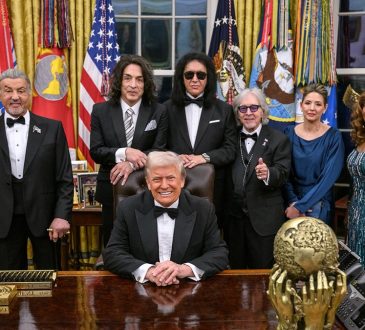A Landmark Decision: President Trump’s Executive Order Banning Federal Funds for Transgender Treatments on Minors Sparks National Debate

In a move that is sending shockwaves through the nation, President Donald Trump has signed an executive order that bans the use of federal funds for transgender treatments on minors. The directive, titled “Protecting Children from Chemical and Surgical Mutilation,” has ignited intense debate, with supporters hailing it as a necessary safeguard for children and critics denouncing it as an unprecedented attack on transgender rights.

A Controversial Yet Defining Shift in Policy
The executive order explicitly prohibits individuals under the age of 19 from receiving federally funded transgender medical treatments. It further classifies research supporting such interventions as “junk science” and mandates the Department of Justice to draft legislation that would allow families of affected individuals to sue medical professionals who performed these procedures.
“Across the country today, medical professionals are maiming and sterilizing a growing number of impressionable children under the radical and false claim that adults can change a child’s sex through a series of irreversible medical interventions,” the order states.
The directive reflects an ongoing shift in federal policy, aligning with similar state-level measures. It comes as the U.S. Supreme Court deliberates over a Tennessee law that bans transgender treatments for minors, with early indications suggesting a ruling that could set a national precedent.
Federal Crackdown on Transgender Medical Research and Funding
Beyond limiting direct treatments, the executive order also calls for a sweeping review of federally funded transgender research and educational programs. Federal agencies are instructed to rescind or amend policies influenced by the World Professional Association for Transgender Health (WPATH), which the order criticizes for lacking “scientific integrity.”
Additionally, the Department of Health and Human Services is tasked with conducting an extensive review of existing literature on gender dysphoria, with a focus on evaluating alternative treatment approaches for children who experience “rapid-onset gender dysphoria.”
Legal and Political Implications
The order’s most controversial provision directs the Department of Justice to work alongside Congress in drafting legislation that would allow minors and their families to sue medical professionals for performing transgender procedures. This legal avenue, if enacted, could have far-reaching consequences, potentially reshaping medical liability laws and setting new precedents for the healthcare industry.
“The blatant harm done to children by chemical and surgical mutilation cloaks itself in medical necessity,” the order asserts, reinforcing the administration’s stance that transgender healthcare for minors is fundamentally flawed.
Nationwide Reactions and the Road Ahead
The executive order has sparked a fiery national debate. Conservative lawmakers and family advocacy groups have praised the measure as a decisive step toward protecting vulnerable children from irreversible medical decisions. Meanwhile, LGBTQ+ organizations and human rights groups have condemned it, arguing that it strips transgender youth of their rights and disregards the recommendations of major medical associations.
Legal challenges are almost certain to follow, with advocacy groups poised to file lawsuits claiming the order violates constitutional protections and medical best practices. The courts will likely play a pivotal role in determining the future of the order, and its ultimate fate could hinge on ongoing Supreme Court deliberations regarding similar state laws.

A Defining Moment in America’s Cultural and Legal Landscape
Trump’s executive order represents one of the most significant federal interventions on transgender medical care in U.S. history. Whether upheld or struck down in court, the directive underscores the deeply polarized views on transgender rights, medical ethics, and parental authority in America.
As the legal battles unfold, the executive order stands as a defining moment in the nation’s evolving discourse on gender identity, medical responsibility, and the role of government in shaping healthcare policies. Regardless of where one stands on the issue, one thing is clear—this landmark decision has set the stage for a historic showdown that will shape the future of transgender healthcare in America for years to come.




